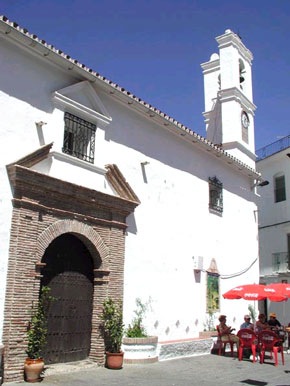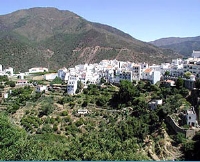
The territory of Istan is framed by the Sierra de las Nieves range and part of it is even included in the area that has been designated a biosphere reserve. Little more need be said to describe the ecological value of this area that is, moreover, overlooked by the Sierra Real range (1,331 metres) in the north, whose scenery competes with that of the La Zarina (1,141 metres) and Lastonar (1,260 metres) hills very near the coast.
The River Verde valley opens a path through these heights. Before reaching the La Concepcion reservoir it flows through such exceptionally attractive landscape as Dehesa de Bornoque, where cork oaks mix with gall oaks and even some Spanish firs, which shows how widely distributed this last species is in the Sierra de las Nieves. Closer to the village the valley takes in terraced lands where fruit trees and vegetables grow.
The River Verde valley opens a path through these heights. Before reaching the La Concepción reservoir, it flows through the exceptionally attractive landscape of Dehesa de Bornoque, where cork oaks mix with gall oaks and even some Spanish firs, showing how widely distributed this last species is in the Sierra de las Nieves. Closer to the village the valley takes in terraced lands where fruit trees and vegetables grow.
The area’s first settlers were Muslims who, in the time of Omar Ben Hafsun, occupied the Arboto fort that was located in a place known as Plaza de Armas. The actual foundation of Istán, however, was in the mid-fifteenth century when the Christian troops under the command of Saavedra Urdiales prepared an attack on the Arboto fortress in 1448. After a battle on the banks of the River Verde, the defeated Arabs fled to the present site of Istán, whose name apparently means “the highest place”. Here they built a new fortress of which some ruins still remain, and the village’s first houses sprang up next to this bastion. 
When the Moorish rebellion erupted in 1568, Istán did not hesitate to take a very active part in it, since the lord of the village was the person who was in charge of fermenting the rebellion not only in the coastal zone but also in the Ronda highlands. Realising the gravity of the situation, Felipe II dispatched Luis Ponce de Leon, who finally put an end to the uprising. With the outbreak squashed and the Moors driven out, Istán was repopulated with Christians, many of whom came from Murcia and spoke the “Panocho” dialect, and this term was applied as a nickname to the residents of Istán.
